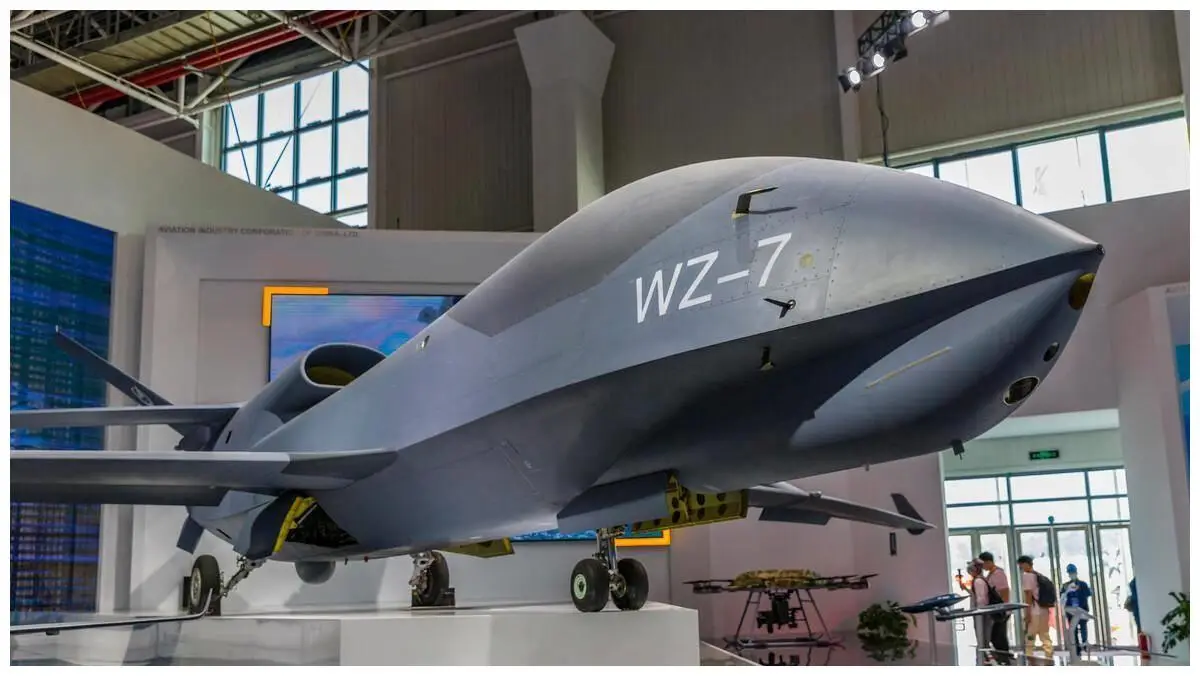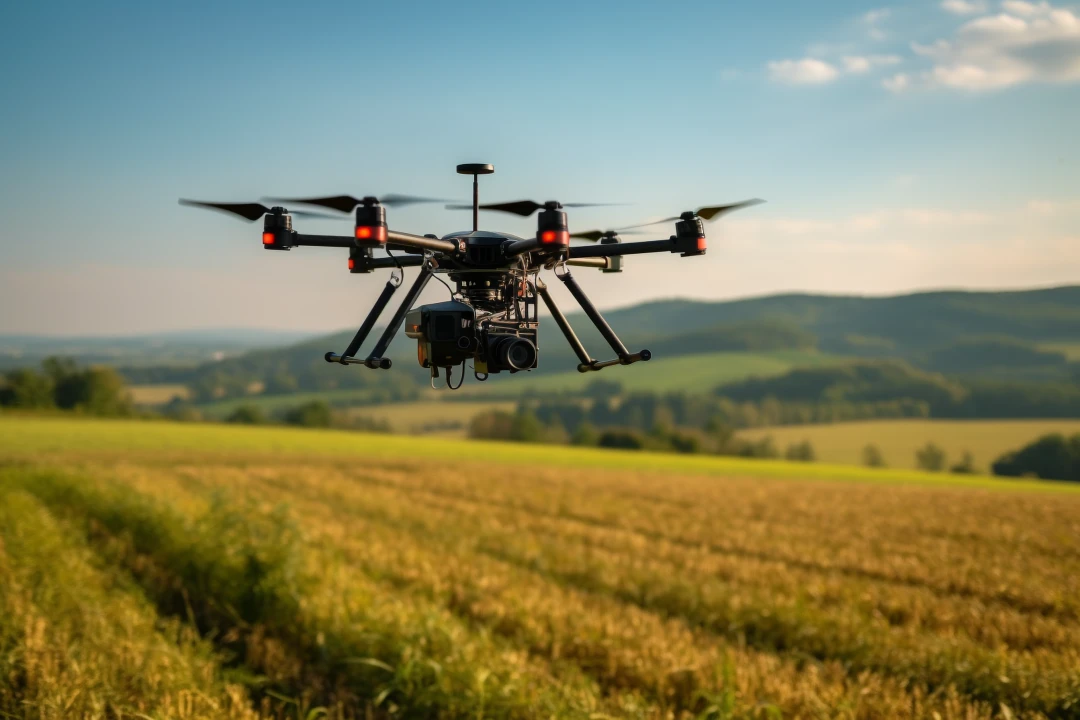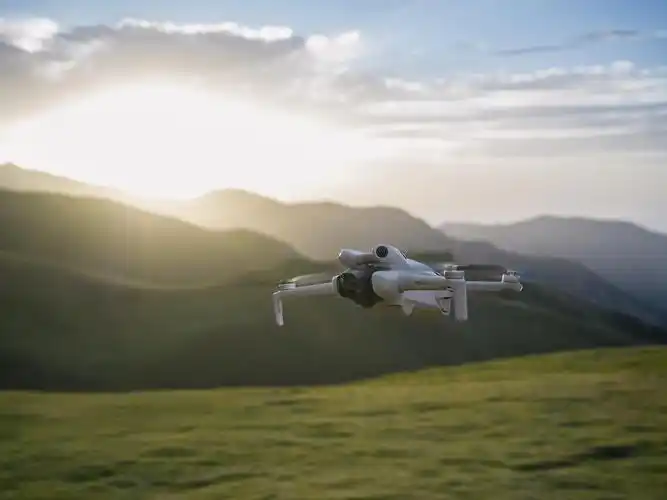Türkiye's Unmanned Aerial Vehicle Builds "Nest" at Sea

After the land ski jump takeoff test of TB-3 UAV last year, the Ministry of Defence of Türkiye released the video of this type of UAV taking off and landing test at sea some time ago. In the video, a TB-3 UAV takes off from the amphibious attack ship "Anadolu" of the Türkiye Navy in a short distance, and then lands on the deck of the ship without any landing aids.
TB-3 UAV is the shipboard version of TB-2 surveillance and strike integrated UAV, a "fist" product of Türkiye Baika Company. It has larger volume and stronger ability to mount weapons. Its airframe uses domestic parts at many places, and has added a folding wing design that is suitable for parking and scheduling on the ship.
For the successful takeoff and landing on the ship, Türkiye's media believed that the TB-3 UAV has achieved domestic technological innovation and become one of the few surveillance drones in the world that can take off and land from a shorter flight deck. This move marks the substantive stage of Türkiye's Navy's plan to build a "UAV carrier" based on TB-3 UAVs. In the future, there may be more different types of drones on board, providing a new way of maritime power delivery.
F-35B fighter jet procurement plan blocked, seizing the opportunity to build carrier based unmanned aerial vehicles
The localization of weapons and equipment is often a necessary means to seek iterative updates of weapons and equipment based on changes in the external military trade environment. At first, Türkiye's navy planned to purchase a number of US F-35B fighter planes with short takeoff and vertical landing capabilities, and specially transform the "Anadolu" amphibious assault ship to carry fighter planes. Previously, Türkiye actively participated in the F-35 Joint Strike Fighter Program led by the United States and became the third level partner. Türkiye Aerospace Industry Corporation is the manufacturer of the program, which has the ability to assemble the F-35 aircraft and face the fuselage of global production centers.
The world is unpredictable. At the beginning of the turmoil in the Middle East in 2011, Türkiye began to be deeply involved in Middle East affairs. In 2017, Türkiye signed a contract with Russia to purchase the S-400 air defense missile system, which led to the rapid deterioration of US Turkish relations. Türkiye was subsequently removed from the F-35 Joint Strike Fighter Program, and the plan to equip the "Anadolu" with F-35B fighter planes also came to naught. Türkiye's military had to continue to maintain old F-16 fighter planes.
The F-35B aircraft procurement plan was blocked, and Türkiye began to build shipborne UAVs. In recent years, Türkiye's UAV has performed well in local conflicts and has become a "star" product in the military trade market. Compared to manned fighter jets, drones are lighter and meet the requirements for short takeoff and landing, while the "Anadolu" amphibious assault ship is bulky and can carry a large number of carrier based drones. After careful consideration, Türkiye's military decided to design TB-3 shipborne UAV on the basis of TB-2 UAV.
There are many problems that drones face in order to successfully land on ships, the first of which is to overcome the flight resistance during landing. In order to meet the needs of shipborne takeoff and landing, the landing gear of TB-3 unmanned aerial vehicle has been upgraded to a retractable drag reduction structure - the shock absorber spring has been changed to a hydraulic buffer, and lateral fuselage connecting rods have been installed on both sides of the buffer to enhance the ability to resist crosswind overturning during sea takeoff and landing. In addition, the aircraft model adopts an upward folding hinge folding wing to reduce the parking space for fighter jets; The body is designed with anti-corrosion measures to adapt to harsh marine environments.
In 2023, the first flight of TB-3 UAV was successful, and Türkiye's military began to optimize the configuration of "Anadolu" to support its deployment of UAV. This optimization plan includes installing dedicated unmanned aerial vehicle control stations and beyond line of sight satellite communication terminals, upgrading the interception device system and safety net, etc.
After modification, the "Anadolu" has been completely transformed, approaching a "drone carrier". The front of the ship has a large open flight deck and a ski jump deck, which can accommodate 12 TB-3 drones simultaneously; The rear is equipped with a well shaped deck for receiving and launching landing craft; Internally, it can also accommodate tanks, armored vehicles, and ground troops. Türkiye's military said that the "Anadolu" will become the core of the fleet and form a fully functional maritime battle group together with frigates, anti submarine ships and submarines.
In addition, the cost of a single TB-3 drone is much lower than the cost of developing and manufacturing manned fighter jets and training pilots, and there are not many requirements for deck infrastructure. Only appropriate modifications need to be made to the existing surface vessels to create an "aircraft carrier" capable of carrying a large number of drones.
Technical blockade forces equipment localization, TB-3 drone successfully achieves onboard takeoff and landing
With its unique geographical advantages, Türkiye has long been involved in various forces and has obtained various advanced weapons and equipment. However, this diplomatic strategy has restricted the development of Türkiye's military industry, and it is often blocked by other countries in the procurement of key weapons and equipment. For example, the "eyes" of the TB-2 drone - an advanced electro-optical turret imported from Canada - are still priced at $550000 even for second-hand products with a flight time of up to 1000 hours, while a high-end version of the TB-2 drone is only priced at $5 million.
In addition to "starting from scratch", in 2020, Canada also cancelled the technology export license for UAVs to Türkiye on the grounds of foreign policy. For a long time, the development progress and production efficiency of Türkiye's UAV have been greatly reduced, forcing Türkiye's military to find alternative products of the same type.
New policies were issued to increase the proportion of domestic weapons, stipulating that UAV manufacturers should transfer at least 60% of the contract value to domestic contractors... Türkiye's government took a series of measures to integrate advantageous resources, attract and cultivate talents, and escort the development of UAVs. At present, the UAV industry chain in Türkiye consists of more than 2000 small and medium-sized companies across the country. These companies can generally provide generous salaries and a good working environment, provide a continuous pool of talents for innovative research and development, and promote the autonomous and controllable development of domestic UAV technology.
The external embargo did not restrict Türkiye's determination to develop UAVs, but promoted the upgrading of domestic weapons and equipment. In recent years, Türkiye's arms export volume has constantly broken historical records. As the "name card" of the country's defense industry, UAVs have occupied 65% of the global military UAV export market. As a "newcomer", TB-3 unmanned aerial vehicle adopts domestic components in multiple designs. Compared with the TB-2 drone, the TB-3 drone has three main improvements.
One is a significant increase in the upper limit load. After the TB-3 drone was equipped with domestically produced engines, the aircraft's ceiling was raised from over 6000 meters to over 9000 meters, and the maximum takeoff weight and payload also significantly increased, expanding the tactical application scenarios and mission execution capabilities of the drone.
Secondly, the electronic system is more stable. The TB-3 drone adopts a domestically produced optoelectronic turret, with a more reasonable appearance size and system layout. All optical sensors and data processing machines are integrated into the turret, which has stronger long-distance target monitoring and recognition capabilities, integrating the advantages of clarity, accuracy, and stability.
The third is to expand and increase the efficiency of weapon systems. The weapon attachment points of TB-3 unmanned aerial vehicle have been increased from 4 to 6, and it can be equipped with precision guided bombs, laser guided rockets, gliders, etc., with high strike accuracy. In the future, it may also be equipped with anti-ship weapons and airdropped sonar buoys.
Drone carriers are not yet fully developed, and carrier based drones are calling for more 'partners'
Türkiye is not the only country that develops shipborne UAVs. Globally, more and more countries are considering unmanned platforms as important weapons and equipment for future maritime and amphibious operations.
In 2019, the French Navy established its first carrier based drone squadron, carrying the S-100 drone onto the Northwest Wind class amphibious landing ship. The helicopter carrier under construction in Russia is planned to carry four carrier based unmanned aerial vehicles. The Royal Navy hopes to equip two Queen Elizabeth class aircraft carriers with necessary auxiliary launch systems and recovery equipment to deploy various fixed wing drones. India also plans to install equipment and facilities to ensure the landing and takeoff of unmanned aerial vehicles on newly built domestically produced aircraft carriers.
An aircraft carrier is like a floating airport, and the key to forming combat effectiveness is not the carrier itself, but the combat performance of the carrier based aircraft it carries. Currently, there are many countries in the world that have aircraft carriers, but there are very few countries that can produce high-performance carrier based aircraft. Although Türkiye has developed the TB-3 shipborne UAV, there is still a gap in operational performance compared with manned shipborne aircraft - the TB-3 UAV does not have air combat capability, and there are also shortcomings in ground attack capability.
Moreover, the TB-3 drone adopts a gliding wing shape, making takeoff and landing operations on the deck cumbersome and complex. The efficiency of the deployment and recovery of carrier based aircraft often determines whether they can find an advantage in future naval battles. Simply put, in order to build a successful "drone carrier", the first step is to comprehensively improve the performance of carrier based drones, and secondly, to solve the problem of ensuring the takeoff and landing of drones.
It can be said that the TB-3 drone still has a long way to go in terms of distance generation combat capability. However, Türkiye's military still took firm steps and planned to deploy more types of UAVs on the Anadolu. In October 2024, Türkiye Baika Company released the video of the ground test of the "Red Apple" UAV engine. The size of the "Red Apple" drone is comparable to that of the Swedish "Eagle Lion" fighter jet, and it has the ability to conduct high-altitude long endurance reconnaissance and attack. It introduces advanced technology and design concepts to achieve the integration of stealth performance, diversified weapon systems, and intelligent control systems. The person in charge of Baika Company stated that the follow-up models of the "Red Apple" drone are expected to achieve supersonic flight, with a ceiling of over 10000 meters, and can carry various domestically produced air to ground and air-to-air missiles. It is reported that Türkiye's military plans to test this type of UAV on the Anadolu this year.
Another UAV "Anka-3" in Türkiye will also complete its first missile carrying flight in September 2024. The Anka 3 adopts a flying wing design and has the ability to strike in depth. Later, it will also be equipped with two new domestic turbofan engines in Türkiye. It is worth noting that this is an aeroengine developed by Türkiye for the domestic five generation TF-X.
In the era of informatization, the cross integration of multi domain combat scenarios has made the battlefield situation more complex and placed higher demands on unmanned equipment. In recent years, Türkiye's military has proposed the idea of "loyal wingmen", and plans to form a formation of five generations of aircraft and unmanned combat aircraft. On the one hand, by leveraging the combat network node functions of fifth generation aircraft, the mobility and firepower advantages of drones can be fully utilized. On the other hand, drones can act as "wingmen" for manned fighter jets in combat, searching for threats in front of the "mother aircraft" and firing, reducing the damage rate of manned fighter jets. This new air combat grouping mode can effectively reduce personnel casualties and lower combat costs.
At present, the TF-X fighter jet is still in the testing and development stage. As is well known, the fifth generation fighter jet, as the culmination of cutting-edge technology in the aviation field, has great research and development difficulties, and it is still unknown whether the TF-X fighter jet can ultimately form combat capabilities. It remains to be seen whether the TB-3 unmanned aerial vehicle, which lacks a "partner," can demonstrate combat effectiveness after successfully boarding the ship.





